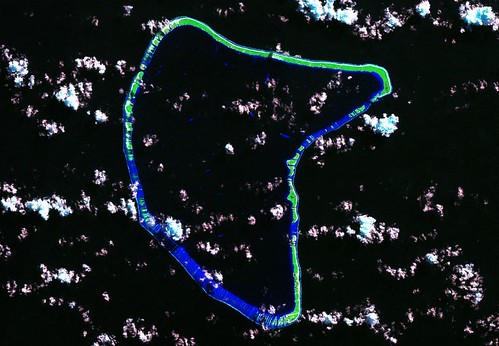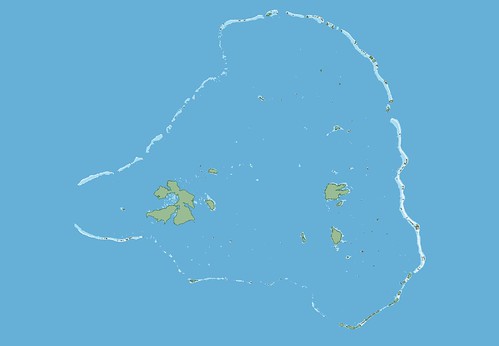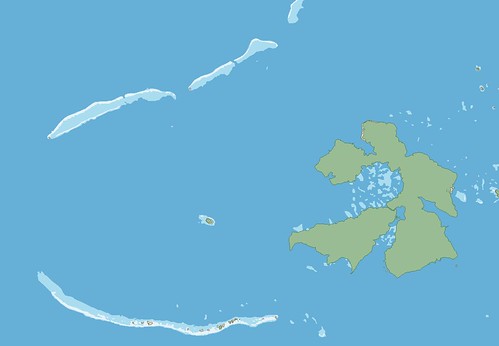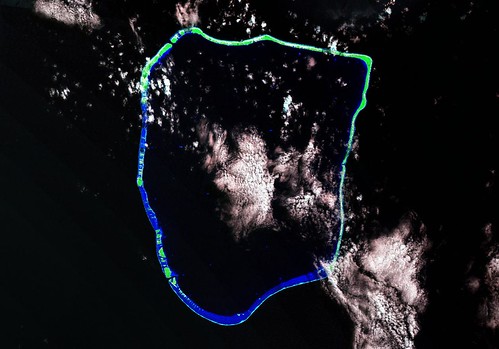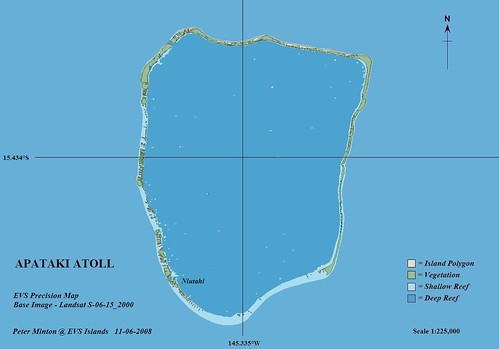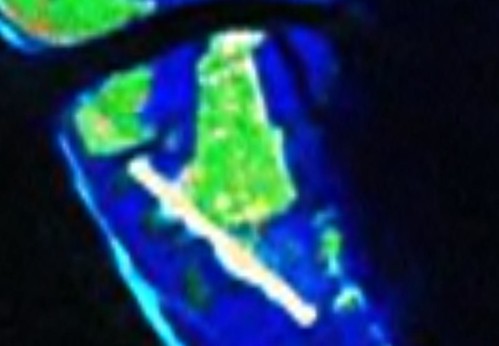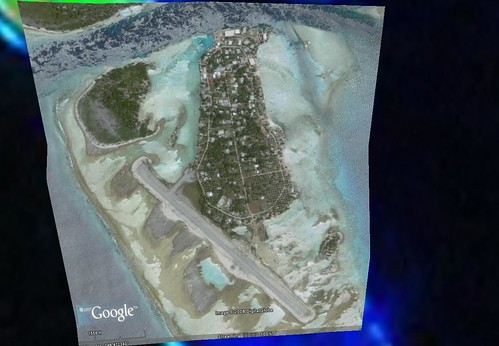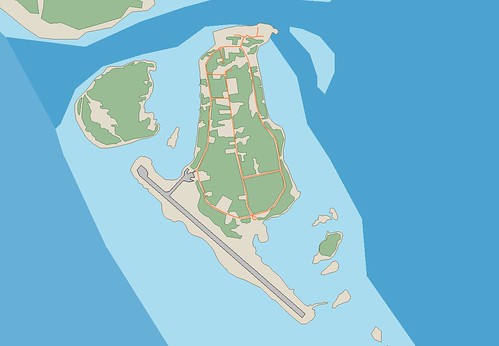How To Get Back To Page One On Google Search Results
One gets spoiled having your posts consistently showing up on page one of Google search results. Having recently (11/01/2008) undergone the shame of having my posts moved from page one to page fifty-one, I have pondered how best to get back to page one. I think I have a way - Wikipedia, both praised and reviled, but consistently it's articles are page one on most Google search results.
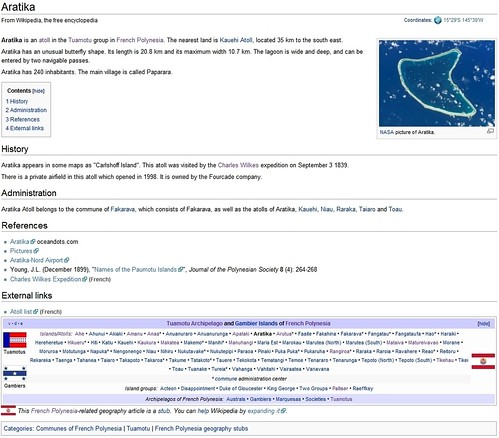
Aratika Atoll Wikipedia Page (Old Style)
Enter Aratika Atoll and Google returns the Wikipedia entry at page one number two. Go to the entry and previous to my rework of the Wikipedia article, you would have seen the above. An Astronaut Photograph of the atoll, a brief text entry, along with a few Reference links make up the entire article. Frankly, it's okay. However, I decided these atoll / island entries needed a few changes.
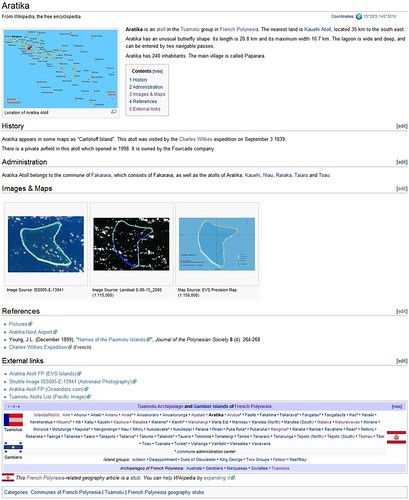
Aratika Atoll Wikipedia Page (New Style)
This is the same article with my changes that not only benefit the reader by adding consistent image content, but also applies some formatting to aid in the flow of information. Let's see what I've done.
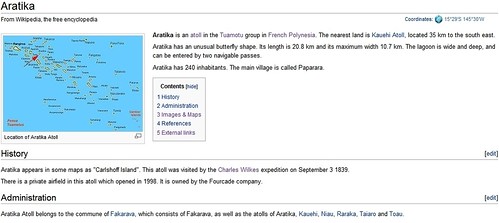
Aratika Atoll Wikipedia Page (New Style - Top)
Up top I've included a Tuamotus Locator Map (see the red arrow). It will allow the reader a view of the island within a broader spatial context. I've not added anything to the text portion.
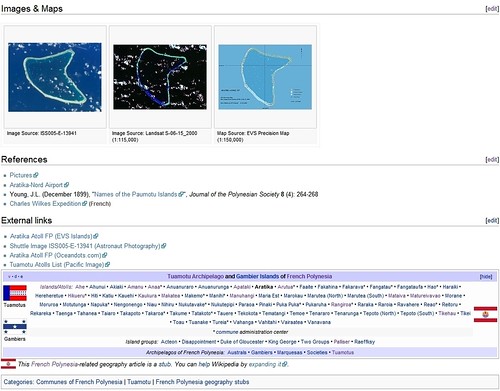
Aratika Atoll Wikipedia Page (New Style - Bottom)
I've added a section called Images & Maps. It is in this section that I post any Wikipedia qualified image or map of the entire atoll. For sure I include the EVS precision map and Landsat image and when available, the ISS (Astronaut Photograph) of the atoll. The External Links section now lists links to the appropriate posts/image/article in EVS Islands, Astronaut Photography and Oceandots.com. Any other links of value would be added, but the first three will always be included.
In my opinion, these changes gives the article a more respectable look and the additional image/map content provides the reader with important spatial information. So far I've modified Wikipedia articles for Aratika, Apataki, Arutua and Tikehau Atolls. I believe what I've done is good for Wikipedia and good for EVS Islands. You know - Win / Win! What do you think?
